The power of the student consult
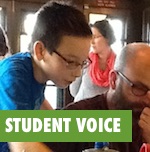
If you’re wondering what engages, excites and motivates students, the answer is easy: ask them.
Creating opportunities for students to give feedback on plans, projects, assessments and activities builds a collaborative learning community, and creates leadership and student voice opportunities.
Here’s how one school gave student consultants a shot.
How it worked at Burke
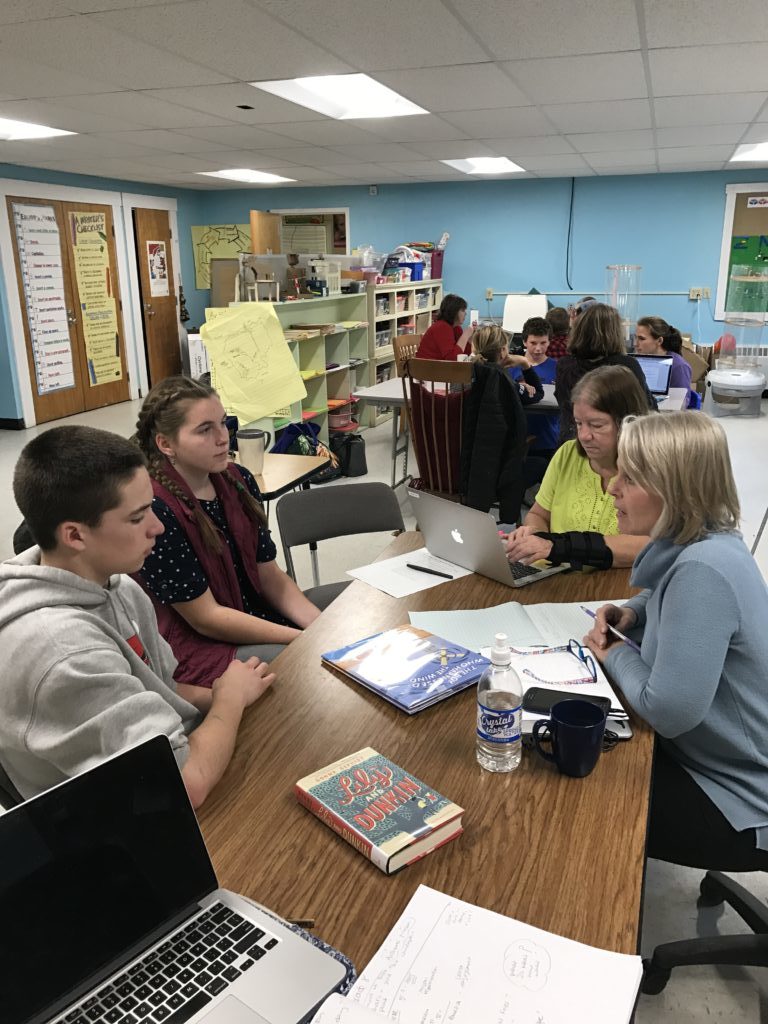
At Burke Town School, in West Burke VT, educators wanted to get student input on several development initiatives. These included the 8th grade PBL unit, a 6th grade integrated PBL unit, how PLPs are working, and ideas for advisory.
The process
Before the consult:
Burke educators picked a class period that would be turned over to this process of student consultations. Next they prepped by designing a protocol for how to structure the consultations. They chose to meet with students in small groups, where each group would tackle one particular issue facing the school.
Then the educators spent some time considering what questions it would be useful to ask. They decided to share summaries of what they were trying to achieve, and designed open-ended questions. They also decided to focus on trying not to “speak teacher”.
During the consult:
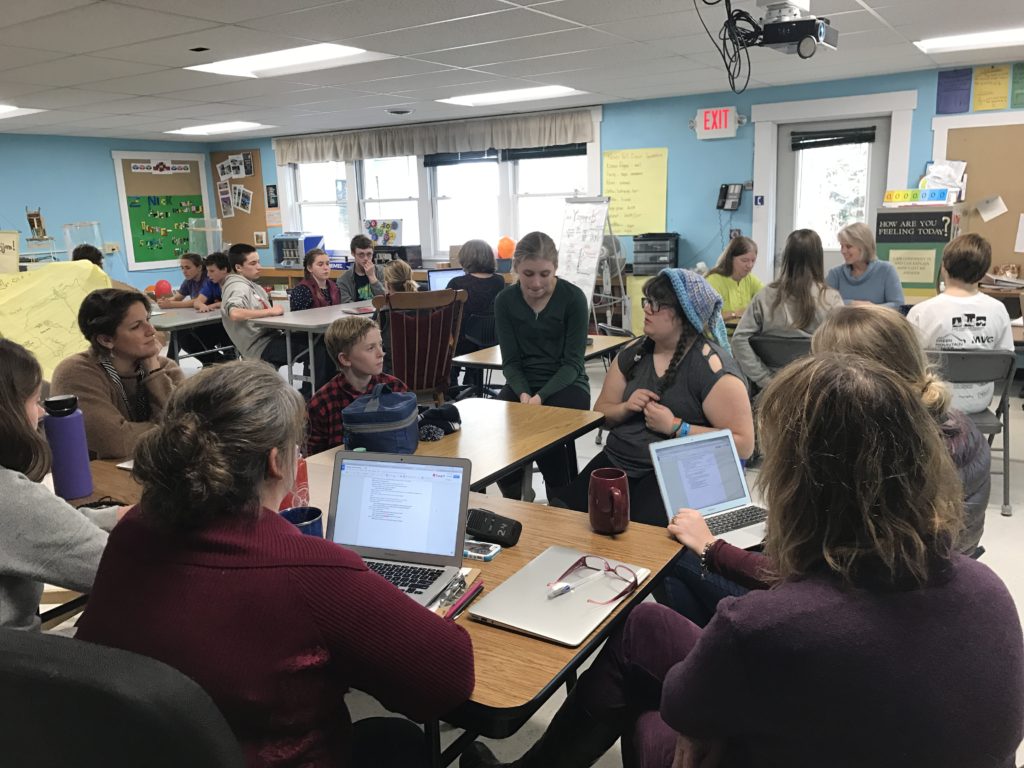
During the class period, small groups of students rotated to each teacher team and spent fifteen minutes tackling a particular issue. Laptops were open to provide resources to consider together, and both educators and students remained very present and focused on the flow of communication. Students had the chance to consult with each of the teams of teachers, thus consulting on each issue on the table.
After the consult:
The whole faculty took fifteen minutes to share amongst themselves what they had learned, and how the students’ feedback could impact their plans.
While this was happening, I was on hand (hello!) to meet with the students and hear their reflections on the experience.
Finally, the teacher teams gathered to revise their plans based on the input from students and their own reflections, as well as those from the students.
Results:
We did this process twice with each half of the 8th grade at Burke. There was a strong interest from the teachers in wanting to have students at other grade levels provide consultation as well later in the year.
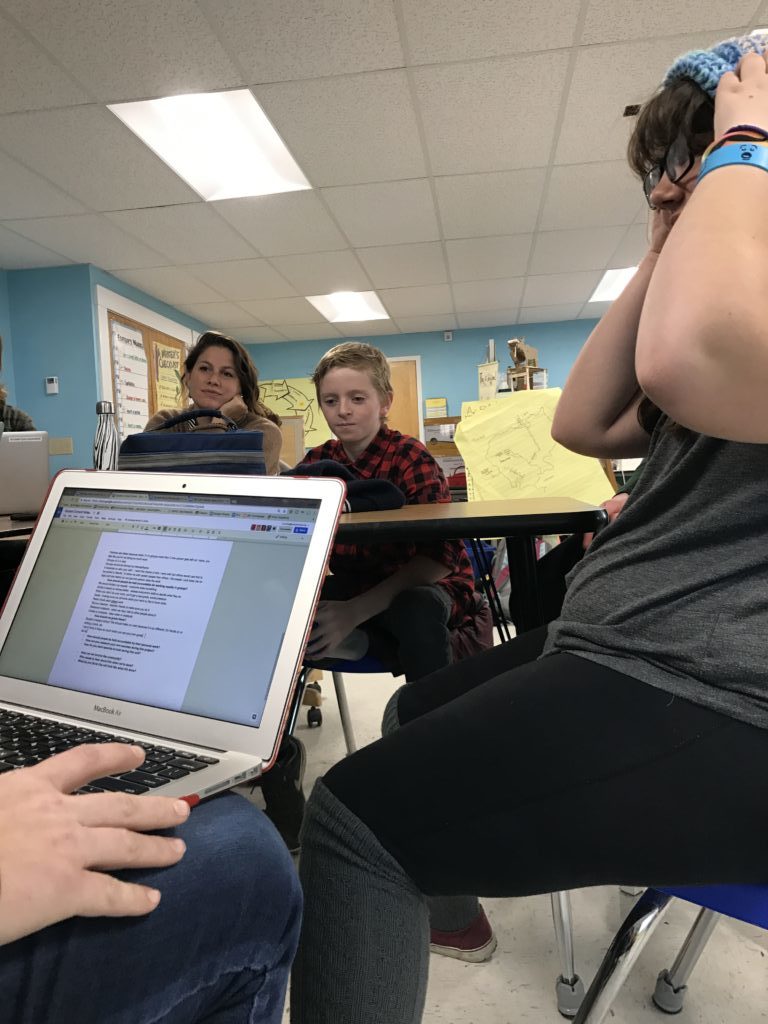
Feedback from Burke’s teachers
After the consult, Burke Town teachers reflected that:
- The students were very open and honest;
- They learned that PLPs are not yet as meaningful as they could be; students were unclear about the value of this learning exhibition;
- Students thought more frequent check-ins during project-based learning would be helpful;
- Students felt like they knew where they were with what/why from their daily/weekly work;
- Math check-ins are helpful for students in making it clear what they need to work on;
- Students wanted to learn more about developing organizational skills;
- Students want teacher check-ins but not too frequently — this is stressful for them!
- Students want a choice to work individually or in small groups;
- Students like written feedback, including specifics on what they did well;
- Students want specific targets of what they are required to do;
- Students would like more help and structure in setting goals for their PLPs.
All in all, the teachers found it reassuring that the students’ answers to their questions were pretty similar across the cohort.
Scaffolding student reflection
We know that reflecting on experiences is often where the deep learning and perspective taking can take place, and this was certainly the case with both groups of 8th graders. Here are the questions I asked them:
- What did you think of the experience?
- How did that feel?
- What worked, what didn’t
- What would you change about it?
- Do you think we should do it again?
- How often, if so?
- What do you hope?
Feedback from Burke’s students
These are direct quotes from the students after the student consults.
- “I felt powerful and honest”
- “It felt good to have a say, having input”
- “I liked having insight, what we are talking about and planning”
- “I liked that we have impact and could change the 5th graders experience in PLPs”
- “I felt equal to adults”
- “It built empathy for teachers”
- “Yes we should do it again!”
- “it was good to get ideas out”
- “Teachers don’t normally ask for your feedback so it was kinda strange.”
- “Good because you could express your opinion.” (Everyone agreed on this by a show of hands.)
Planning your own student consults
Take a deep breath and jump.
While it seemed a bit awkward at first, when students saw that the teachers were genuinely interested in what they had to say, were actively taking notes and listening, students opened up, gave valuable feedback, and felt that their voices mattered.
All teachers and students needed was a structure and process for the student consult. I am hoping that we can plan this into our professional development time several times a year, and that teachers will be inspired to do regular student consultations within their classes so it feels more “normal” and embedded in the student experience. And when students see their ideas and suggestions taking shape in the class, they can feel more buy in and pride that this is their education, and they helped shape it.
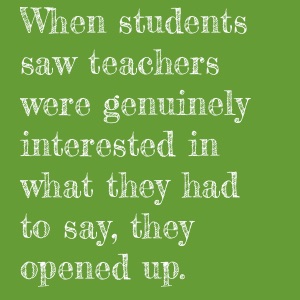
There are several movements afoot were students are at the center of leadership and change — especially in the area of redesigning PLPs.
As a teacher or school leader, you can plan consultations with students on just about any topic. Think: curriculum decisions, projects ideas, culminating events, or schedule changes. Students are especially valuable in helping to re-evaluate plans in progress. For instance, when Crossett Brook Middle School wanted to revamp their personalized learning plans (PLPs), they turned to their students to tell them what worked and what could be improved.
Consider your questions
Brainstorm questions that are open-ended enough not to limit student thinking:
- What do you care about within this topic or idea?
- How should we learn more about this?
- Who needs to know about this?
- If you were to study this topic in our community what ideas do you have?
- What would you create?
- How should we share our work?
But don’t just take our word for it:
In their article Integrating Student Consultation into Teacher Professional Development, Penny Bishop, James Nagle, and John Downes encourage teachers to ask open-ended questions that prompt students to share ideas unimagined before.
For instance, rather than asking “Would you prefer to learn about water quality by conducting experiments in the classroom or collecting and analyzing data at a nearby stream?” they might ask instead, “What are some ways you think you’d enjoy learning about environmental problems?”
“The facilitators instruct teachers to be patient and let the insights emerge naturally. It is tempting to leap immediately to judgments about students suggestions, concluding that one suggestion would be too expensive, or another impractical given travel challenges, building constraints, or inadequate time to accomplish the task. Instead, they emphasize patiently listening to what the students suggest is important to them. Students are then quite adept at helping navigate around the realities of schooling”
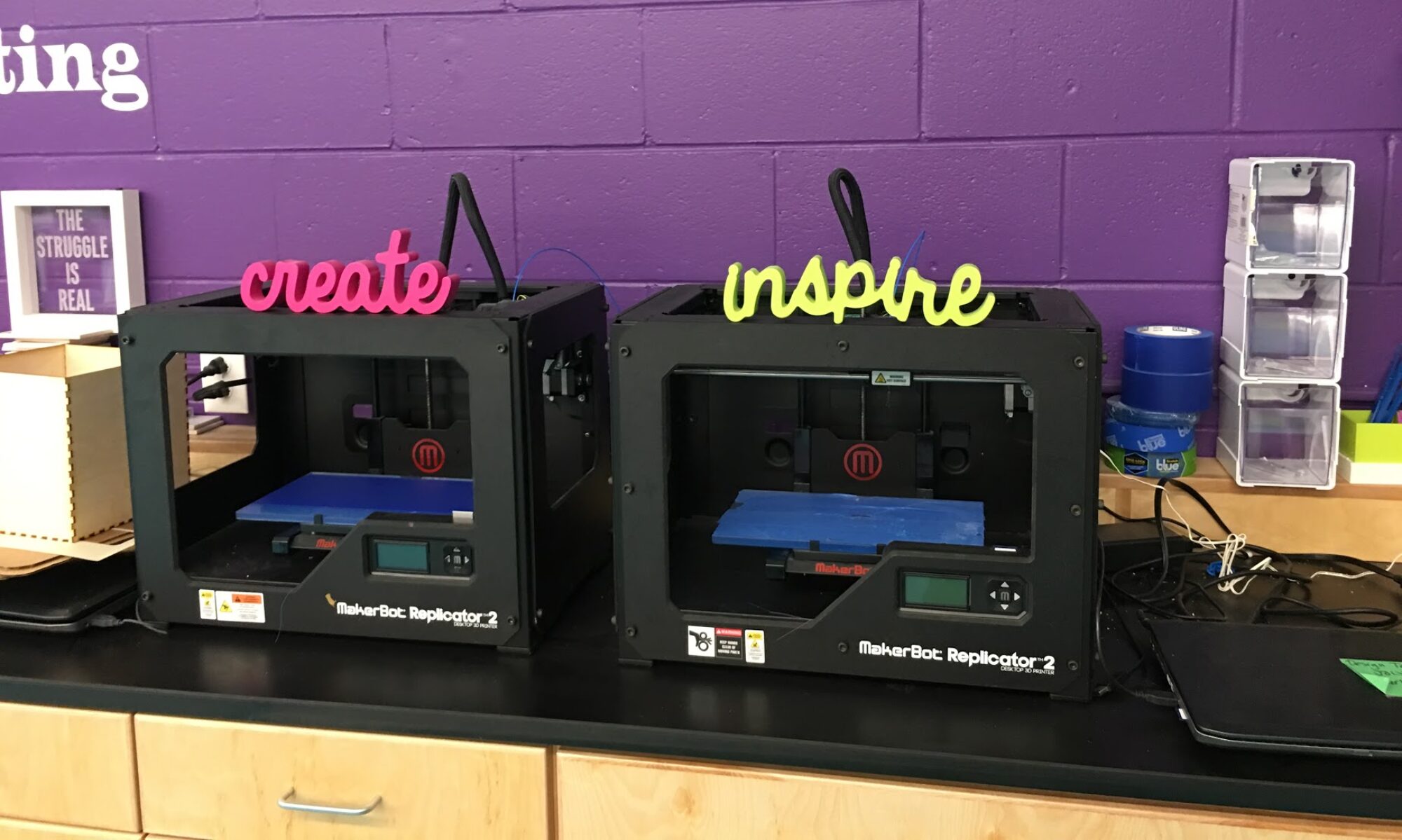

wonderful post thanks for sharing 🙂